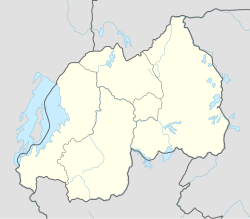This article relies largely or entirely on a single source .(April 2023) |
Kinigi | |
|---|---|
Town | |
| Coordinates: 1°26′48″S29°35′15″E / 1.44663°S 29.58749°E | |
| Country | |
| Province | Northern Province |
| District | Musanze |
| Population (2012 census) [1] | |
• Total | 17,305 |
Kinigi is a town in Northern Province, Rwanda, with a population of 17,305 (2012 census). [1]
